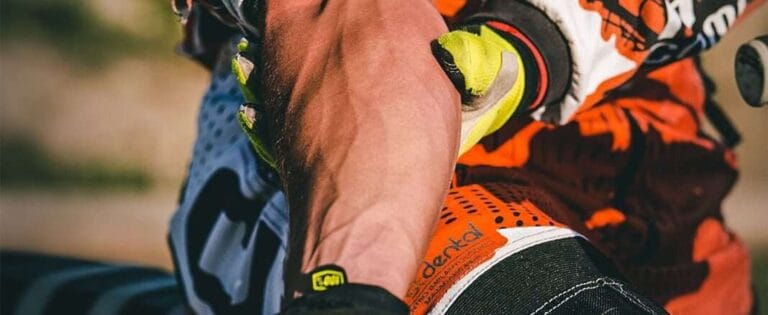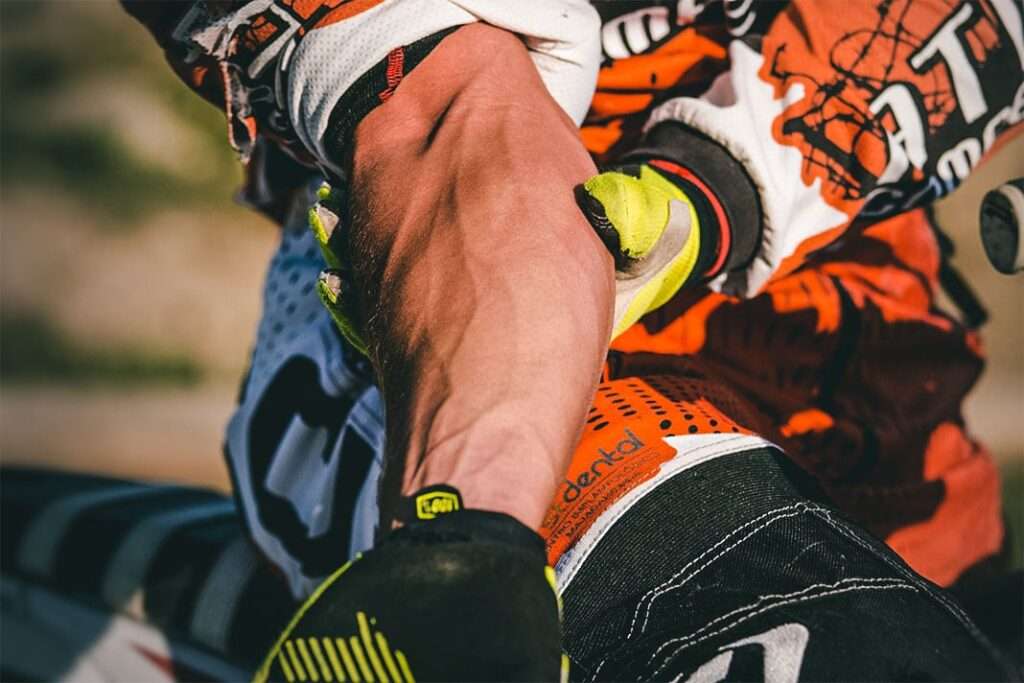The forearm’s chronic exertional compartment syndrome is a rare “ut incre” condition that is usually underdiagnosed, possibly first described in 1983.
Patients are usually involved in activities with repetitive isometric muscle loading of the wrist while gripping. It has been most reported in competitive motorcycling, known as ‘arm pump’, but other sports include:
⦁ Gymnastics and hockey.
⦁ Wheelchair athletics and climbing.
⦁ Water skiing and horse riding
⦁ Kayaking and rowing
⦁ Non-sporting activities: such as carpentry and manual work.
It is most commonly associated with motorsports such as motocross and road racing, but other activities such as paddling, weight lifting and mountaineering can induce this condition. This is because of vibration, forced grip and repeated wrist movements to control the throttle.
An arm pump is a Chronic exertional compartment syndrome of the forearm, a clinical condition in which an individual develops intermittent marked pain in the forearms after a period of exercise or exertion.
Arm pump increases pressure following muscle expansion within an inelastic tissue envelope, resulting in compromised perfusion and tissue function.
Typical symptoms are pain, distal paraesthesia and loss of function. The condition is self-limiting and resolves completely between periods of activity. Arm pump typically affects younger adults, mainly men but it is reported in women too.
Diagnosis
As mentioned earlier, this is not a common condition. Still, it should be considered in an individual who develops considerable forearm pain after exertion that settles spontaneously after a period of rest (ranging from 12 minutes to 24 hours).
The forearm will typically feel hard and tight while the pain is present. Numbness in the hand or cramping of the muscles of the forearm, weakness or clumsiness may occur.
The condition typically arises from repetitive, high-intensity movements that engage the forearm muscles, causing them to swell and compress the blood vessels and nerves within the compartment. This compression restricts blood flow and leads to the symptoms associated with the arm pump.
Several factors can contribute to arm pump, including:
- Muscle fatigue: Overuse or intense exertion of the forearm muscles can lead to fatigue, swelling, and increased pressure within the compartment.
- Poor ergonomics or technique: Improper body positioning or technique during activities like motorcycling or cycling can exacerbate muscle strain and compression.
- Increased grip pressure: Gripping objects too tightly, such as handlebars or climbing holds, can contribute to muscle fatigue and compression.
- Dehydration: Inadequate hydration can exacerbate muscle cramping and decrease muscle efficiency, leading to increased pressure within the forearm compartment
In severe cases where symptoms persist despite conservative measures, medical interventions such as surgery to release the fascial compartments may be considered. However, these interventions are typically reserved for cases that don’t respond to conservative treatments.
Diagnosis of this condition is initially made on a classical approach
⦁ History of pain in the forearm
⦁ Loss of grip strength
⦁ Altered sensation in the hands brought on by activity.
Symptoms must resolve completely between periods of activity and are typically bilateral.
Arm pump, also known as “arm-pump syndrome” or “compartment syndrome,” is a condition commonly experienced by athletes, particularly motocross riders, cyclists, rowers and climbers. It occurs when there’s an excessive build-up of pressure within the muscles of the forearm, leading to restricted blood flow. This can cause symptoms such as tightness, swelling, pain, and reduced grip strength during physical activity.
The diagnosis is confirmed using intra-compartmental pressure monitoring in multiple compartments before, during, and after exercise.
We may recommend serial MRI scans of the arms at rest, immediately after exercise and every five minutes for 15 minutes, but this is quite an expensive investigation. MRI scan may help to exclude other causes of forearm pain. The condition can be diagnosed by directly measuring the pressure within the muscles. This can only be done by passing a needle through the skin into the muscle under local anaesthetic and connecting this needle to a pressure device. This is an invasive procedure and should only be performed by a specialist. The diagnosis is supported if the pressures are >10mmHg at rest and >20mmHg 1 and 5 minutes after exertion. The pressure’s speed to baseline after exertion may be a more reliable diagnostic determinant.
An increase in the forearm circumference on exertion may also be found.
Tendinopathies (such as tennis or golfer’s elbow) of the forearm muscles, blood vessels, or nerve entrapments may present similar symptoms and should be excluded.
Pressure testing in CECS is considered positive if any of the following are found: resting pressure (P) > 15 mmHg, 1 min post-exercise P > 30 mmHg or 5 min post-exercise P > 20 mmHg.
Some authors have also suggested accepting a rise of 10 mmHg with exertion regardless of baseline.
An MRI scan of the forearm, including elbows, should be considered to exclude tendinopathies. Nerve Conduction studies including EMG (Muscle activity testing) should be considered if needed. These are improtant to exclude other problems of the arm.
Treatment
Non-operative treatment
Treatment and prevention strategies for arm pump include:
- Rest and recovery: Taking breaks and allowing the muscles to rest can help alleviate symptoms and prevent further strain.
- Stretching and strengthening exercises: Stretching the forearm muscles and incorporating strength training exercises can improve muscle flexibility and endurance, reducing the risk of arm pump. I am cc’ing my colleague Martin for his experienced input.
- Proper technique and ergonomics: Ensuring proper body positioning and technique during activities can help minimise strain on the forearm muscles.
- Hydration and nutrition: Maintaining adequate hydration and consuming a balanced diet can support muscle function and prevent cramping.
- Compression garments: Wearing compression sleeves or wraps during physical activity can help reduce swelling and improve blood flow to the forearm muscles.
In severe cases where symptoms persist despite conservative measures, medical interventions such as surgery to release the fascial compartments may be considered. However, these interventions are typically reserved for cases that don’t respond to conservative treatments. I feel this is unlikely here.
Operative treatment
⦁ Arm pump can be treated by surgery to release the muscle’s fascia (connective tissue covering). This is usually done under a general anaesthetic and the tissue can either be split or removed. The challenge is the diagnosis, but a successful outcome can be expected in most patients (80-90%).
⦁ Postoperative, after surgical fasciectomy/fasciotomy, the patient must rest the arm. The arm is bandaged, but a splint is not required. The wound must be kept dry for 10 days.






